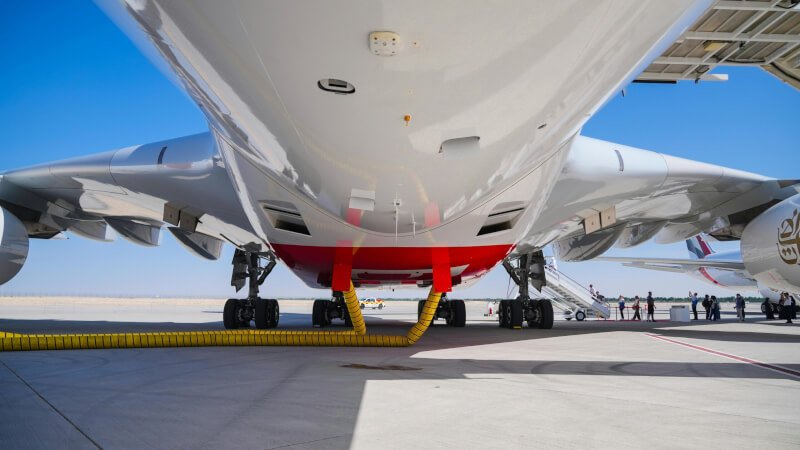So you’ve taken up the thrilling hobby of flying remote control helicopters, but now you’re faced with the task of choosing the right flight controller. With so many options on the market, it can be overwhelming to determine which one will suit your needs best. In this article, we’ll break down the different types of flight controllers available for RC helis, helping you gain a better understanding of their features and functions. Whether you’re a beginner or an experienced pilot, this guide will provide you with the knowledge you need to make an informed decision and take your RC heli flying to new heights.
Introduction
Welcome to our comprehensive guide on understanding the different types of flight controllers for RC helicopters! If you’re an RC helicopter enthusiast or a beginner looking to dive into this exciting hobby, it’s essential to have a good understanding of flight controllers and their importance. In this article, we will walk you through the definition, types, components, advantages, features to consider, factors to consider when choosing the right flight controller, as well as installation and set-up. So, let’s get started!
Flight Controllers
Definition
Flight controllers are electronic devices that play a crucial role in controlling the flight of an RC helicopter. They are essentially the brain of the helicopter, responsible for interpreting the pilot’s input and making precise adjustments to the rotor speed and control surfaces. Flight controllers use gyroscopes and accelerometers to measure the helicopter’s orientation in real-time, allowing for stable and responsive flight.
Importance
The importance of a flight controller cannot be overstated. It is the primary component that ensures your RC helicopter flies smoothly and safely. A good flight controller will provide stability, improve maneuverability, and offer advanced features to enhance your flying experience. Without a reliable flight controller, piloting an RC helicopter can be challenging and prone to crashes.

Types of Flight Controllers
Traditional Controllers
Traditional flight controllers have been around for a long time and are still commonly used in RC helicopters. These controllers rely on a mechanical flybar to stabilize the helicopter. The flybar helps counteract the helicopter’s natural tendency to roll, pitch, and yaw, providing stability in flight.
Flybarless Controllers
Flybarless controllers are a more modern and advanced type of flight controller. As the name suggests, these controllers eliminate the need for a mechanical flybar by relying solely on electronic stabilization. Flybarless controllers use electronic sensors and algorithms to stabilize the helicopter, resulting in improved control, agility, and performance.
Traditional Controllers
Definition
Traditional flight controllers, also known as flybar controllers, utilize a mechanical flybar system to stabilize the RC helicopter. The flybar is a rod that extends horizontally from the main rotor hub and has paddles attached to either end.
Components
The main components of a traditional flight controller include the flybar, control arms, control rods, and the swashplate. The flybar acts as a stabilizer, the control arms transmit control inputs from the pilot, the control rods connect the control arms to the flybar, and the swashplate controls the pitch of the rotor blades.
Working Principle
When the pilot makes control inputs through the transmitter, the control arms and rods transfer those movements to the flybar. The flybar, in turn, counteracts the helicopter’s motion, providing stability. This mechanical stabilization system has been widely used for many years and offers a proven method for controlling RC helicopters.

Flybarless Controllers
Definition
Flybarless controllers, on the other hand, rely solely on electronic stabilization to control the RC helicopter. These controllers eliminate the need for a physical flybar, resulting in a more streamlined and efficient design.
Components
The components of a flybarless controller include gyroscopes, accelerometers, and an electronic control unit (ECU). The gyroscopes detect angular velocity, while the accelerometers measure linear acceleration. The ECU processes the data from the sensors and sends appropriate signals to the rotor control system to maintain stability.
Advantages
Flybarless controllers offer several advantages over traditional controllers. Firstly, they provide faster response times and more precise control inputs, resulting in smoother and more agile flight performance. Additionally, flybarless systems allow for more advanced flight modes, such as 3D aerobatics, which can add an extra layer of excitement to your flying experience. Furthermore, flybarless controllers reduce mechanical complexity and weight, making them easier to install and maintain.
Features to Consider
Flight Modes
When choosing a flight controller, it is essential to consider the available flight modes. Flight modes determine how the helicopter responds to different control inputs and can offer various levels of stability and agility. Common flight modes include beginner mode, intermediate mode, and advanced mode, each catering to different skill levels and flying styles.
Sensor Types
Flight controllers utilize different sensor types to detect the helicopter’s orientation and movement. The most common sensors include gyroscopes, accelerometers, and barometric sensors. Gyroscopes measure angular velocity, accelerometers measure linear acceleration, and barometric sensors measure altitude. It is crucial to consider the sensor types that best suit your flying style and requirements.
Programming Options
Some flight controllers offer advanced programming options that allow you to fine-tune various parameters to optimize your helicopter’s performance. These options can include adjusting control gains, setting flight mode transitions, and customizing control inputs. Consider the programming options available and choose a flight controller that provides the flexibility you need.

Factors to Consider
Skill Level
Your skill level as an RC helicopter pilot is an important factor to consider when choosing a flight controller. Beginners may benefit from flight controllers with more stability and easier control, while experienced pilots may prefer controllers with advanced features and agility. Choose a flight controller that matches your current skill level but also offers room for growth.
Budget
Flight controllers come in a range of prices, and it is important to consider your budget when making a decision. While more expensive controllers often offer advanced features and better performance, there are also affordable options that provide excellent value for money. Determine your budget and find a flight controller that fits within your price range without compromising on quality.
Heli Type
The type of RC helicopter you own or plan to own is another factor to consider. Different flight controllers are designed for specific heli types, such as collective pitch helicopters or fixed pitch helicopters. Ensure that the flight controller you choose is compatible with your heli type to ensure optimal performance.
Choosing the Right Flight Controller
Research
To choose the right flight controller for your RC helicopter, thorough research is key. Read product reviews, watch online videos, and seek advice from fellow RC helicopter enthusiasts. Look for flight controllers that have positive feedback, reliable performance, and a good reputation within the RC community.
Testing
If possible, try out different flight controllers before making a final decision. Attend local flying events or find a local RC hobby shop that offers demo units. Testing the flight controllers firsthand will give you a better idea of their performance and ease of use, helping you make a more informed decision.
Consulting Experts
Consulting experts in the RC helicopter community can provide valuable insights and recommendations. Reach out to experienced pilots, join online forums, or attend RC helicopter clubs to connect with knowledgeable individuals who can guide you in choosing the right flight controller for your needs.

Installation and Set-up
Hardware Installation
Once you have chosen your flight controller, it’s time to install it in your RC helicopter. Follow the manufacturer’s instructions and guidelines for hardware installation, ensuring that all connections are secure and properly aligned. Take your time during the installation process to avoid any mistakes that could affect the performance or safety of your helicopter.
Software Configuration
After the hardware installation is complete, you will need to configure the flight controller’s software settings. Connect the flight controller to a computer or use the compatible transmitter to access the configuration software. Adjust the necessary parameters, such as control gains and flight modes, to match your flying style and preferences. It is crucial to carefully follow the instructions provided by the manufacturer to ensure proper configuration.
Conclusion
Choosing the right flight controller for your RC helicopter is a crucial step in ensuring an enjoyable and safe flying experience. Understanding the different types of flight controllers, considering the features and factors that align with your needs, and thorough research will help you make an informed decision. Installation and set-up should be done with care and attention, following the manufacturer’s instructions. Remember to consult experts and fellow enthusiasts for additional guidance. With the right flight controller, you’ll be ready to take to the skies and explore the exciting world of RC helicopter flying!



